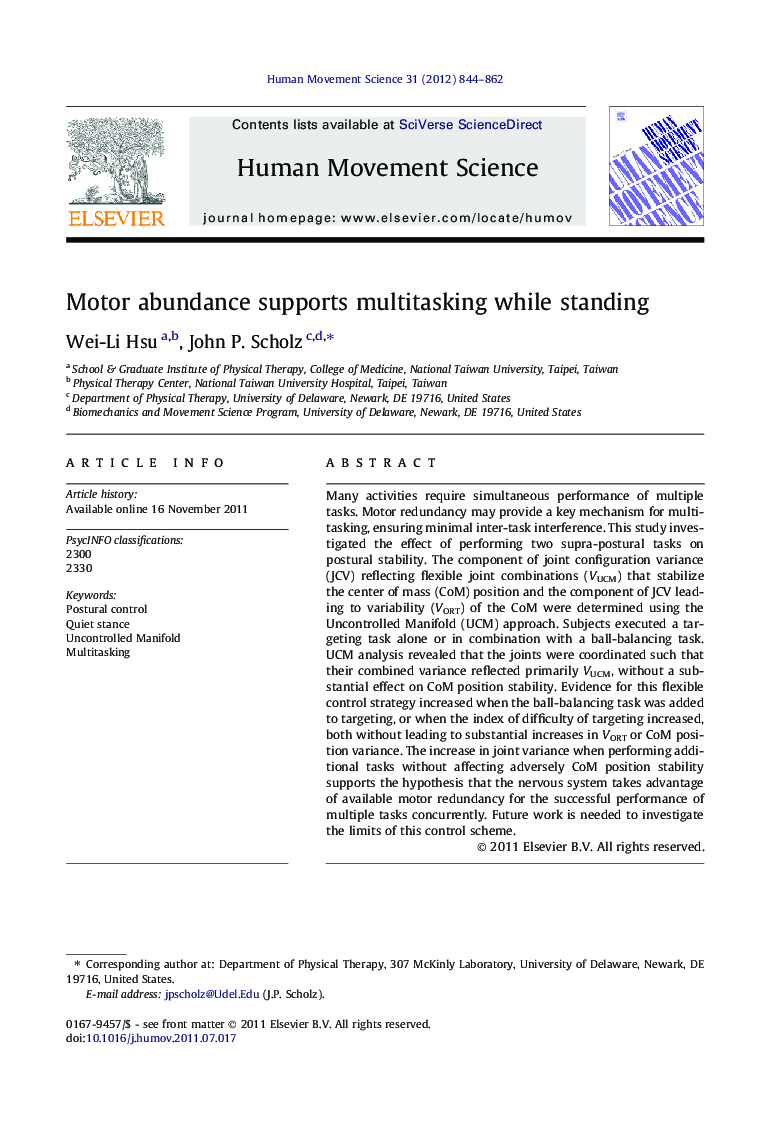| Article ID | Journal | Published Year | Pages | File Type |
|---|---|---|---|---|
| 928469 | Human Movement Science | 2012 | 19 Pages |
Many activities require simultaneous performance of multiple tasks. Motor redundancy may provide a key mechanism for multitasking, ensuring minimal inter-task interference. This study investigated the effect of performing two supra-postural tasks on postural stability. The component of joint configuration variance (JCV) reflecting flexible joint combinations (VUCM) that stabilize the center of mass (CoM) position and the component of JCV leading to variability (VORT) of the CoM were determined using the Uncontrolled Manifold (UCM) approach. Subjects executed a targeting task alone or in combination with a ball-balancing task. UCM analysis revealed that the joints were coordinated such that their combined variance reflected primarily VUCM, without a substantial effect on CoM position stability. Evidence for this flexible control strategy increased when the ball-balancing task was added to targeting, or when the index of difficulty of targeting increased, both without leading to substantial increases in VORT or CoM position variance. The increase in joint variance when performing additional tasks without affecting adversely CoM position stability supports the hypothesis that the nervous system takes advantage of available motor redundancy for the successful performance of multiple tasks concurrently. Future work is needed to investigate the limits of this control scheme.
► Multiple joints throughout the body axis are coordinated to preserve postural stability. ► We asked how joint coordination affects posture when performing supra-postural tasks. ► Adding supra-postural tasks to standing led to flexible coordination patterns. ► The results are consistent with recent models of task-relevant, multi-joint coordination.
